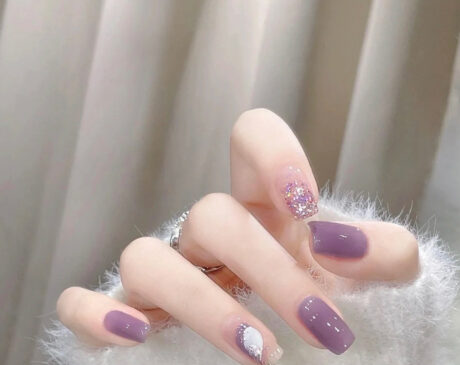Can I Use Top Coat as Base Coat?
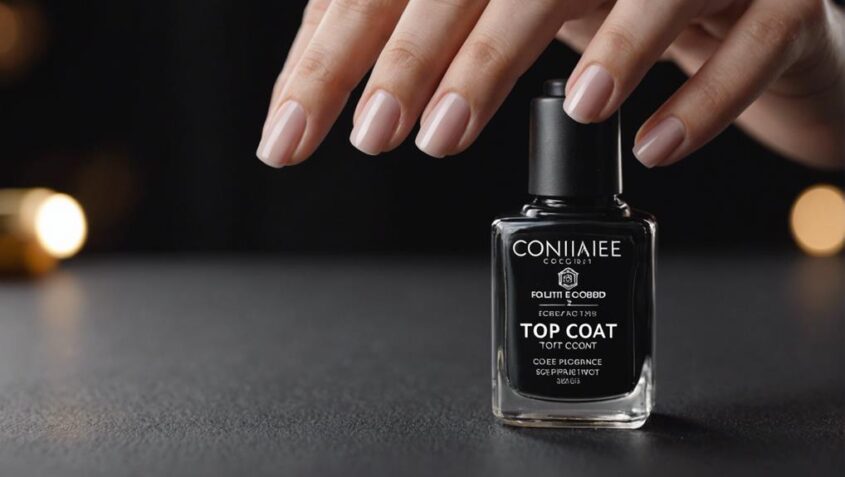
Substituting top coat for base coat may lead to premature chipping due to varied formulations. Base coat creates a smooth surface, facilitates polish adhesion, and prevents staining, while top coat enhances shine, prevents chipping, and extends manicure life. Understanding the distinct purposes of each product optimizes nail care results. For optimal outcomes, it's recommended to use a dedicated base coat to maximize manicure longevity. To apply top coat as a base, ensure nails are clean, apply thin layers for better adhesion, and allow each layer to dry thoroughly. For more insights on base and top coat functions, delve into the differences between these nail care essentials.
Key Takeaways
- Using top coat as a base coat may lead to premature chipping.
- Base coat and top coat serve different purposes for optimal nail care.
- Dedicated base coat usage is recommended for longer-lasting manicures.
- Applying thin layers of top coat as a base enhances adhesion.
- Allow each layer of top coat to dry completely before proceeding for best results.
The Difference Between Base Coat and Top Coat
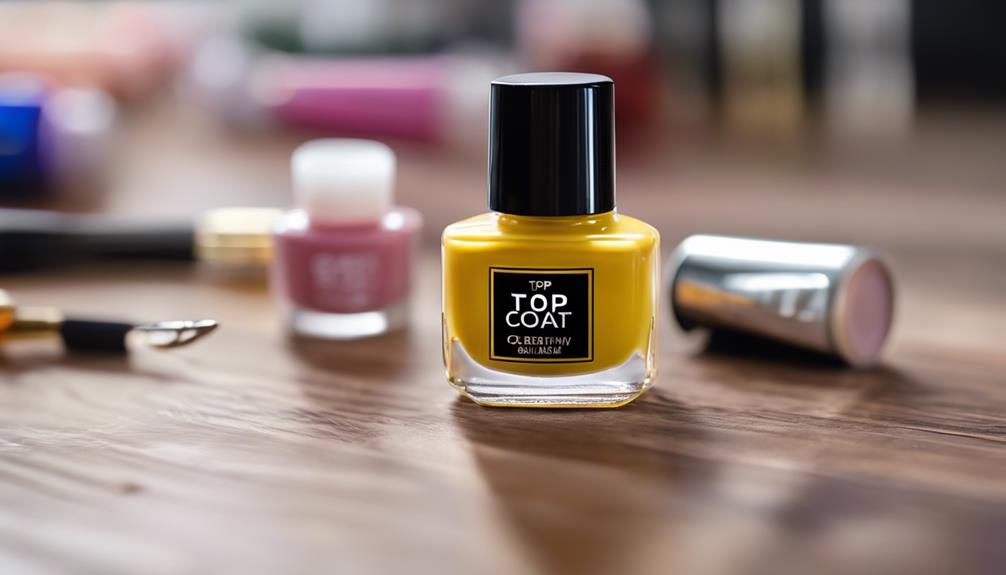
When considering nail polish application, understanding the distinction between a base coat and a top coat is essential for achieving a long-lasting and flawless manicure. A base coat serves as the foundation for your nail polish, creating a smooth surface for better adhesion and preventing staining of the natural nail. It also helps to protect your nails from potential damage caused by pigmented nail polish, such as yellowing or weakening. On the other hand, a top coat is applied over the colored polish to provide a protective layer that enhances shine, prevents chipping, and prolongs the life of your manicure.
While both base and top coats share the common goal of improving the longevity and appearance of your nail polish, they serve distinct purposes in the manicure process. It is essential to use them in conjunction with each other to maximize the benefits they offer. By understanding the unique roles of base and top coats, you can elevate your nail game and achieve professional-looking results at home.
Purpose of Base Coat in a Manicure
In the realm of nail care and manicures, the base coat plays a crucial role in ensuring the longevity and quality of your nail polish application. Base coats are formulated specifically to provide a smooth surface for the nail polish to adhere to, creating a strong bond that helps prevent chipping and peeling. Beyond just being a foundation for your manicure, base coats also serve the purpose of protecting your natural nails from potential staining that can occur from certain pigmented nail polishes. By acting as a barrier, base coats shield your nails from discoloration, allowing you to enjoy a vibrant manicure without the worry of unsightly marks left behind. Additionally, base coats can contain ingredients that help strengthen and nourish your nails, promoting overall nail health. When used correctly, a high-quality base coat not only enhances the aesthetic appeal of your manicure but also contributes to the overall well-being of your nails, making it an essential step in your nail care routine.
Characteristics of a Top Coat
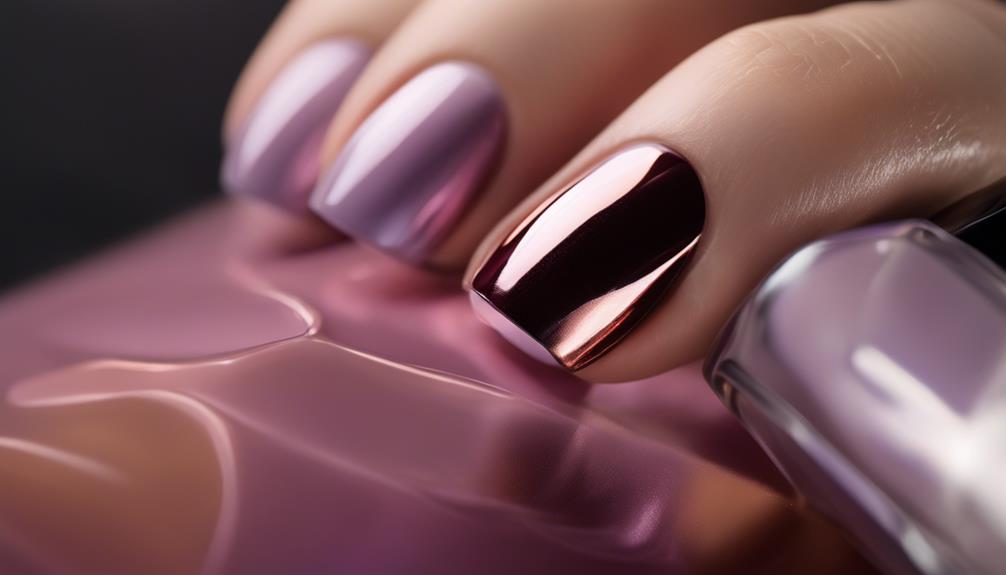
A top coat in the realm of nail care is a transparent, glossy layer applied over nail polish to enhance its durability and provide a high-shine finish. This final layer not only protects the underlying polish from chipping and fading but also adds a lustrous sheen that elevates the overall look of the manicure. One of the key characteristics of a top coat is its quick-drying formula, which helps seal in the color and prevent smudges or imprints, allowing for a flawless finish in minimal time. Additionally, a quality top coat is designed to resist yellowing, ensuring that the nail polish maintains its true hue over time. Many modern top coats also incorporate strengthening properties to fortify the nails and promote healthy growth, making them a versatile product that combines both aesthetic and practical benefits. Furthermore, top coats often contain UV filters to shield the polish from discoloration or dulling caused by sun exposure, prolonging the vibrancy of the manicure.
Can You Substitute Top Coat for Base Coat?
When it comes to nail care, understanding the difference between a base coat and a top coat is essential. While both serve to protect your nails, they have distinct purposes: the base coat prepares the nail surface for polish application, while the top coat provides a protective seal and shine. Substituting a top coat for a base coat may not yield the same results, as each product is formulated to fulfill a specific role in the nail care process.
Base Coat Vs Top Coat
While both base coat and top coat serve distinct purposes in a manicure, substituting a top coat for a base coat is not recommended due to fundamental differences in their formulations and functions. Base coats are specifically formulated to create a smooth surface on the nail, promote adhesion of the nail polish, and prevent staining. They often contain ingredients like formaldehyde resin or calcium fluoride to strengthen the nails and improve polish longevity. On the other hand, top coats are designed to seal and protect the manicure, providing shine and preventing chipping. They typically contain ingredients like acrylics or nitrocellulose to create a hard, durable finish. Using a top coat as a base coat may result in a less durable and long-lasting manicure.
Purpose of Each
In a manicure, the base coat and top coat serve distinct purposes due to differences in their formulations and functions, making it crucial to use each for its intended role rather than substituting one for the other. The base coat acts as a foundation, creating a smooth surface for the nail polish to adhere to, preventing staining, and promoting longer wear. On the other hand, the top coat is designed to seal in the color, add shine, and provide a protective layer against chipping and fading. While both products may appear similar, their specific compositions cater to their unique functions, enhancing the overall quality and longevity of the manicure. Therefore, using a top coat as a base coat may compromise the desired results and longevity of the nail polish application.
Effects of Using Top Coat as Base Coat
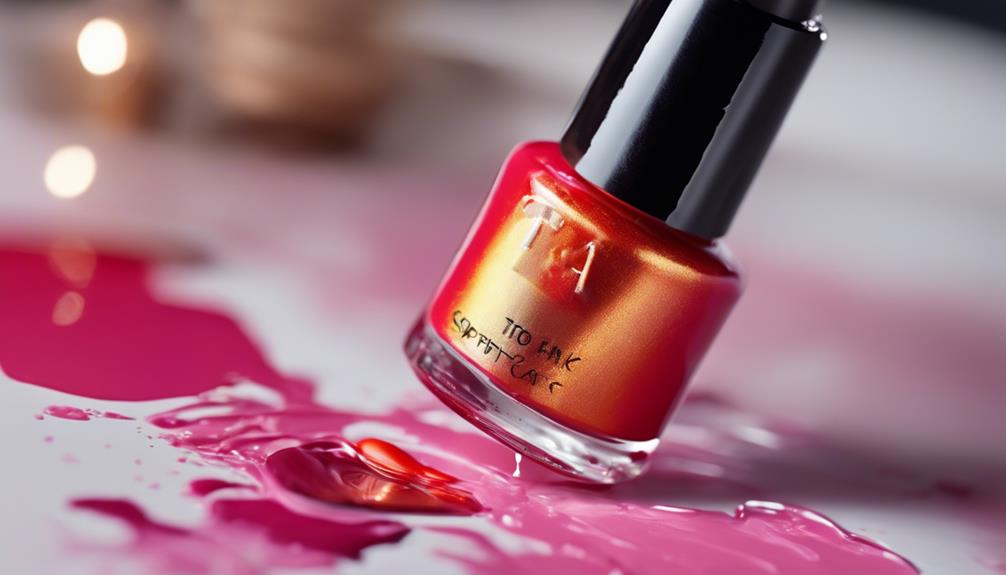
Occasionally, substituting a top coat for a base coat may lead to unintended consequences on the longevity and appearance of your nail polish. While both top coats and base coats serve as protective layers for your nails, they have distinct formulations tailored to their specific functions. Using a top coat as a base coat may not provide the same level of adhesion to the nail surface, potentially leading to premature chipping or peeling of the nail polish.
Furthermore, top coats are designed to dry to a hard, glossy finish, which may not be ideal as a base for applying colored nail polish. The smooth surface created by a top coat may not offer the necessary grip for the colored polish to adhere effectively, resulting in a shorter lifespan of your manicure.
Innovative approaches to nail care are always intriguing, but it is essential to understand the intended purposes of each product to achieve the best results. To maintain the integrity and longevity of your manicure, using a dedicated base coat is recommended for optimal performance.
Tips for Using Top Coat as Base Coat
Considering the potential drawbacks of using a top coat as a base coat, it is important to be mindful of specific tips that can optimize the application process and results when employing this unconventional technique. To ensure the best outcome when using a top coat as a base coat, follow these essential tips:
- Clean and Prep: Thoroughly clean and prep your nails before applying the top coat as a base coat. This step helps to remove any oils or residues that may affect the adhesion of the nail polish.
- Thin Layers: Apply thin layers of the top coat when using it as a base coat. Thin layers dry faster and adhere better to the nail surface, providing a smooth and even base for the nail polish.
- Allow Drying Time: Allow each layer of the top coat to dry completely before proceeding with the next step. Proper drying time ensures that the base coat is fully set and ready for the nail polish application.
Final Verdict: Top Coat Vs. Base Coat

Upon evaluating the performance and benefits of both top coat and base coat nail products, a clear distinction emerges in their respective roles and functionalities in achieving a polished and long-lasting manicure.
| Aspect | Base Coat | Top Coat |
|---|---|---|
| Purpose | Prepares the nail surface for polish application | Seals and protects the nail polish |
| Application | Applied before nail polish | Applied after nail polish |
| Benefits | Smoothens nail surface, prevents staining, enhances adhesion | Adds shine, prevents chipping, extends manicure longevity |
| Drying Time | Quick-drying formula to set the base for polish application | Ensures rapid drying of the nail polish, providing a glossy finish |
| Longevity | Helps nail polish adhere better, extends manicure lifespan | Protects the nail polish, prolongs the manicure's wear time |
Frequently Asked Questions
Is It Safe to Interchange Base Coat and Top Coat?
Interchanging base coat and top coat may compromise the desired outcome of your nail polish application. Base coats are formulated to adhere better to the natural nail, while top coats are designed to protect and add shine.
Will Using Top Coat as Base Coat Affect Nail Health?
Utilizing top coat as a base coat may compromise nail health. Base coats provide specific benefits like adhesion and protection that are crucial for maintaining nail integrity. Opting for proper base coat products is advisable to safeguard nail health.
Can Top Coat Provide the Same Nail Protection as Base Coat?
Top coat can offer some level of nail protection similar to base coat due to its hardening properties. However, it may not provide the same adhesion and bonding benefits as a dedicated base coat, potentially impacting long-term nail health.
What Are the Risks of Using Top Coat as a Base Coat?
Using top coat as a base coat may compromise the adhesion and durability of your nail polish. Risks include chipping, peeling, and uneven application. It's recommended to use products specifically designed for their intended purpose to ensure optimal results.
How Can I Prevent Chipping When Using Top Coat as Base Coat?
To prevent chipping when using top coat as a base coat, prep nails properly, ensuring they are clean and dry. Apply a thin, even layer of top coat, allowing ample drying time. Seal the edges of nails for extra protection.


